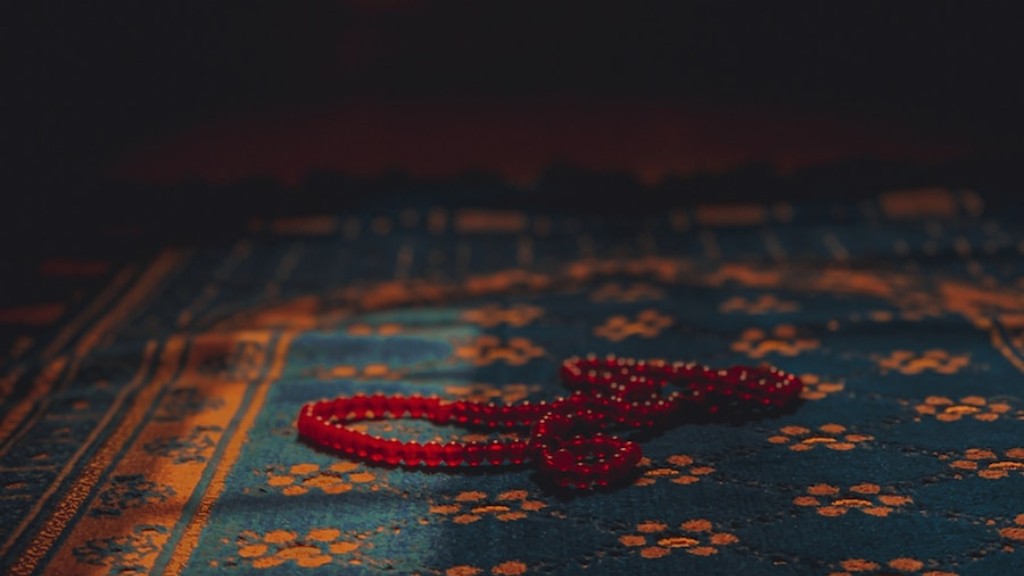The Nature of Hinduism
Hinduism is a faith and spiritual tradition coupled with a rich and vast heritage. It has many different paths and denominational branches, with varying dimensions spanning spiritual, purposeful and ethical dimensions. Through its philosophy, rituals, stories and practices, Hinduism offers a unique perspective on how to live and how to create a meaningful and fulfilling life. At the core of Hinduism is an understanding of the four-part model, encompassing the spiritual and moral development of the person as a whole.
The four-part model is comprised of four basic elements: Dharma (righteousness), Artha (wealth, fulfillment), Kama (enjoyment, pleasure) and Moksha (liberation). It is believed that the fulfillment of these four goals is the essential purpose of a Hindu’s life. A pursuit of Dharma is considered the highest order of action and leads to a virtuous life. Artha, or wealth, is sought so as to have the means to pursue Dharma, Kama and Moksha. The pursuits of Kama, or enjoyment and pleasure, must be reconciled with pursuing Dharma and Artha. Moksha, or liberation, is achieved through spiritual emancipation. This four-part model is deeply rooted in Hinduism, and its core principles are found throughout the scriptures and teachings of Hinduism.
The Curse of Kaliyuga
Hinduism teaches that the universe operates in cycles, where each age (Yuga) is associated with a certain quality or virtue. For example, in Satyug, which was the first age, there was an abundance of truth and justice and the universal laws were respected. Each successive age saw that quality diminish and the world become unbalanced. The current age, Kaliyuga, is the age of darkness. According to Hindu scripture, this is the age of “demonic life cycles”, where the equilibrium of the four-part model is broken and Dharma, Artha, Kama and Moksha are all pursued in excess. This is thought to be the cause of conflict and suffering in the world and is referred to as the Kaliyuga curse.
Hinduism’s solution to counteracting the Kaliyuga curse is to restore the universal four-part model. In essence, this model is about balancing the four core goals of life in the most balanced and harmonious way. This requires individuals to find the balance between Dharma, Artha, Kama and Moksha. It is believed that when everyone is living in harmony and balance with each of the four goals, an equilibrium is achieved and prosperity is restored. It is also believed that by regaining a balanced consciousness, individuals can tap into the true potential of the soul and find Moksha.
The Path of Dharma
Hinduism encourages individuals to pursue Dharma, or righteousness, as the highest purpose in life. Dharma is associated with the pursuit of truth, justice and morality. Pursuing Dharma requires living with integrity, mercy and compassion by developing spiritual awareness and understanding. Dharma is seen as a means of understanding the interconnectedness of life and finding harmony with nature and the universe. It is believed that Dharma encompasses the various laws, customs and practices that allow individuals to live a meaningful, fulfilling and ethical life.
For Hindus, Dharma is about more than simply following certain rules and laws. It is about developing spiritual consciousness and understanding, and it is an ever-evolving journey towards spiritual freedom and understanding. It involves a deep understanding of one’s ethical boundaries and responsibilities, and the knowledge of how one’s beliefs and actions affect the world. Pursuing Dharma is seen as the ultimate goal of life, and it is believed that when Dharma is pursued with sincerity and dedication, ultimate truth and peace can be obtained.
The Pursuit of Artha
Artha, or wealth, is the second of the four-part model in Hinduism. It is seen as a means of nourishing the soul and obtaining the material means to undertake Dharma, Kama and Moksha. Artha is associated with material prosperity, positive accomplishments, a healthy worklife balance and steady growth. It is not just about financial wealth, but also about acquiring knowledge, and gaining physical, mental and emotional strength. Artha is about cultivating the resources and skills necessary for prosperity, and recognizing the importance of living an ethical and purposeful life.
In Hinduism, Artha is seen as an essential part of life, and its pursuit is not associated with greed or excess. It is believed that by gaining a deeper understanding of Artha and balancing it with Dharma, Kama and Moksha, one can create a life that is both prosperous and purposeful. It is also believed that Artha, when pursued in moderation and with a keen awareness of the benefits and consequences of our actions, can lead to a life of lasting fulfillment and inner peace.
The Pleasure of Kama
Kama is the pursuit of pleasure or enjoyment, and it is the third aspect of the four-part model. It is essential to recognize that Kama is not just about physical or sensual pleasure, but also about emotional and mental stimulation. Kama is fundamental to human experience and provides a source of joy, fulfillment and creativity. In Hinduism is it not seen as a secondary form of pleasure, but as an important source of nourishment to the soul.
Kama requires finding balance and harmony between our spiritual, mental and physical pursuits, and it should be seen as an essential component of leading a fulfilling life. For example, in Hinduism, sensually exploring a relationship is not only seen as natural, but also as a sacred offering that can lead to physical, emotional and spiritual development. Kama can also refer to creative pursuits, such as the study of literature or philosophy, which can help to nourish the soul and open up new realms of experience.
The Path to Moksha
Moksha, or liberation, is the ultimate goal of life in Hinduism and is the fourth part of the four-part model. It is not just about physical or material freedom, but also about spiritual liberation, and the pursuit of union with Brahman, or the one absolute reality. According to Hindu scriptures, the path to liberation begins when one turns inward in order to understand the nature of the self and the universe and find a sense of oneness and harmony with all existence.
Moksha is not a goal of self-gratification, but rather one of achieving a higher state of self-awareness and understanding. It is seen as a journey to expand and grow, to explore and learn, and to live a life of spiritual practice and mindfulness. In essence, Moksha is about recognizing the interconnectedness of all things, and living in harmony with oneself and the world around us. By living in alignment with Dharma, Artha and Kama, we can achieve a state of Moksha and ultimate truth.
Conclusion
The four-part model found in Hinduism is essential to understanding the tradition, and the teachings regarding Dharma, Artha, Kama and Moksha can provide individuals with the guidance to lead a meaningful and fulfilling life. In Hinduism, these four elements must be balanced and pursued in moderation in order to achieve prosperity and peace. By understanding the four-part model and incorporating it into our own lives, we can live a life of balance, harmony and spiritual growth, and find our way to Moksha.

